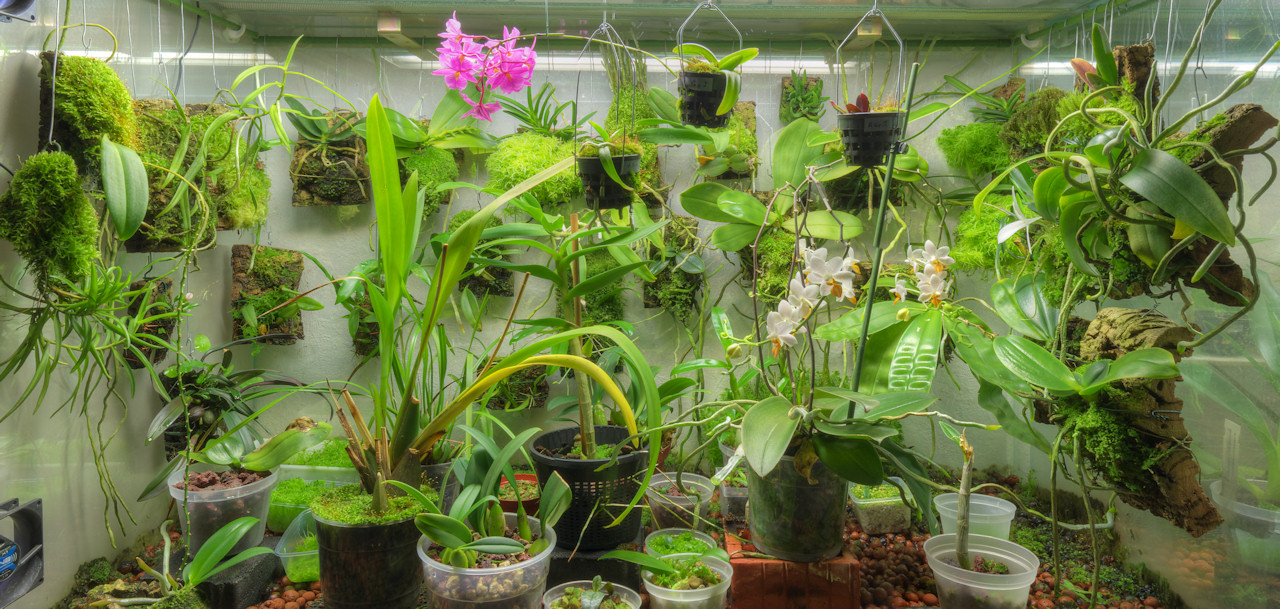Paphman910
Well-Known Member
Humidity: 60-80% rh
Temperature: room temperature (18-30 °C)
Light intensity: my lux meter shows about 7000 lux (~ 700 fc ?). I use fluorescent light (light color 840 + 865) and I´m sure that this cheap lux meter didn´t show the right intensity in this case.
I have some paphs in another terrarium with lower light level and these plants grows in normal size and leaf color.
I don't think your lights caused your Paph delenatii to yellow and shrink in size!
BTW nice collection of orchids!
Paphman910











































